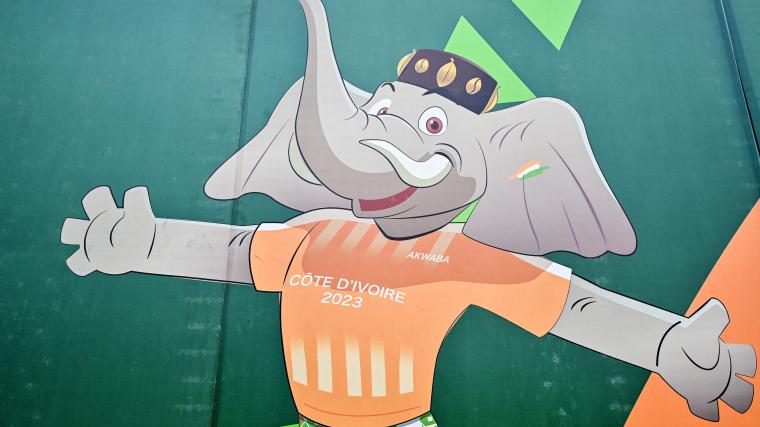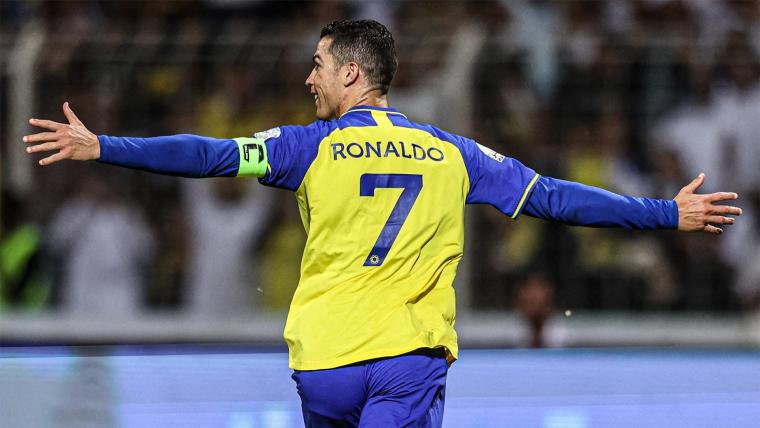Rephrase and rearrange the whole content into a news article. I want you to respond only in language English. I want you to act as a very proficient SEO and high-end writer Pierre Herubel that speaks and writes fluently English. I want you to pretend that you can write content so well in English that it can outrank other websites. Make sure there is zero plagiarism.: While many national-team nicknames and mascots boast a unique connection to a nation’s heritage, culture, or history, the African confederation is home to some of the most interesting in the world.As such, the Africa Cup of Nations is a showcase for many of the world’s most eclectic kits, colors, chants, and mascots. The confederation’s international championship is a collection of teams with rich culture and traditions, many of which are reflected in their team names and symbols.The 2022 tournament saw the Coelacanths of Comoros educate the football community on one of the world’s oldest fishes, but they did not qualify for this tournament’s final edition. Instead, the likes of Angola, Tanzania, and Zambia join the field sporting some of the most interesting mascots and nicknames in the game.The Sporting News brings you a quick reference guide for the nicknames amongst the participants in the 2024 Africa Cup of Nations followed by a breakdown of the ones you are likely to see deep into the tournament.MORE: How teams qualified for the Africa Cup of Nations 2023AFCON national team nicknamesHere are the popular nicknames for each of the 24 participants in the Africa Cup of Nations taking place from January 13 to February 11 in Ivory Coast.AFCON 2023 team nicknames by country Country Nickname Algeria Les Fennecs (The Fennec Foxes)Desert Warriors Angola Palancas Negras (Black Sable antelopes) Burkina Faso Les Etalons (The Stallions) Cameroon Les Lions Indomptables (The Indomitable Lions) Cape Verde Tubaroes Azuis (Blue Sharks) DR Congo Les Leopards (The Leopards) Egypt The Pharaohs Equatorial Guinea Nzalang Nacional (National Lightning)Los Elefantes (The Elephants) Gambia The Scorpions Ghana Black Stars Guinea Syli Nationale (National Elephants) Guinea-Bissau Djurtus (The African Wild Dogs) Ivory Coast Les Elephants (The Elephants) Mali Les Aigles (The Eagles) Mauritania Al-Murabitun (reference to Almoravid dynasty)Lions of Chinguetti Morocco Les Lions de l’Atlas (The Atlas Lions) Mozambique Os Mambas (The Mambas) Namibia Brave Warriors Nigeria Super Eagles Senegal Les Lions de la Teranga (The Lions of Teranga) South Africa Bafana Bafana (“Boys, boys”; “Go, boys”) Tanzania Kilimanjaro StarsTaifa Stars (Nation Stars) Tunisia Les Aigles de Carthage (The Eagles of Carthage) Zambia Chipolopolo (The Copper Bullets)Algeria: Fennec FoxesWhile other African nations have gone for more intimidating and imposing nicknames, Algeria has embraced a more furry and, perhaps, cute part of its national heritage. The fennec fox, a fox native to the Sahara Desert and much of north Africa, is the national animal of Algeria and thus made the perfect nickname. It even featured on the 2010 jersey.A fennec fox is known for its distinctive feature: massive ears. These serve to dissipate heat and help the fox survive in the arid climates in which it resides. Expect to hear this name regularly over the month of the tournament with Algeria being one of the favorites.Angola: Palancas NegrasThe black sable antelopes — or “Palancas Negras” in Portuguese, which is the official language of Angola — boast a significant number residing in eastern and southern African nation. The small population of sable antelopes in Angola is separated from the rest of the species, which largely resides on the eastern side of the continent, ranging from Kenya to South Africa.The nominate subspecies of the sable antelopes is the black, or Matetsi sable antelopes, which is declining significantly in numbers as farmers look to cross breeds of sable antelopes for various reasons. The animal is the national symbol of Angola, portrayed on stamps, bills, and passports. It was the first animal to receive full legal protection in the country following its independence in 1975.Cameroon: Indomitable LionsThe recognizable nickname was born out of a rebrand of sorts. Initially known as just the Lions — the country’s national animal, which lives mostly in the semi-arid northern parts — president Ahmadou Ahidjo tweaked things a bit in 1972. He changed the name to “Indomitable Lions” hoping to give the team a bit more impressive and recognizable status. “Indomitable” by definition means “impossible to subdue or defeat”.Cameroon was once the pride of Africa through the 80s and 90s, highlighted by the 1982 men’s World Cup (three impressive group-stage draws) and the 1990 World Cup (quarterfinal berth), plus Africa Cup of Nations victories in 1988, 2000, and 2002. However, things have fallen flat for Cameroon of late, and they did not get out of their group at the last World Cup — although they did beat mighty Brazil in their final match.Egypt: The PharaohsWhile other nicknames take some research to discern their history and meaning, this one is straightforward. Egypt, famous around the world for archaeological wonders such as the pyramids, is known as the Pharaohs, a nod to the country’s ancient monarchs.The pharaohs were thought of as messengers from the gods and therefore had divine right to lead the people. As one of the most decorated African nations — the continent’s first representatives at the World Cup in 1934 and winners of the most AFCON tournaments — Egypt have earned royal status in continental football.Equatorial Guinea: Nzalang NacionalWhile many of the other national nicknames have been translated from the local language, this one has been left in its native tongue, Fang, which is a Central African dialect spoken mostly in Equatorial Guinea, Gabon, and southern Cameroon. While most English versions of the name have this translated as “The National Thunder”, it actually seems to better translate to “The National Lightning.”The name is a reference to the vicious storms experienced in the rainy season, which, despite the tiny nature of the Massachusetts-sized nation, is completely reversed depending on your location. If you’re on the mainland, the rainy season is a more traditional March to May and/or September to November depending on the year. However, on Bioko Island, located off the coast of Cameroon but officially part of Equatorial Guinea, the rainy season is reversed, with precipitation concentrated mostly from November to March.Guinea-Bissau: DjurtusGuinea-Bissau is a tiny nation on Africa’s west coast, roughly the size of Maryland. It was home to the African wild dog, known as Djurtus in the local Portuguese-influenced Creole dialect. It is closely related to a Dhole, another endangered species of wild dog that lives in Asia. Unfortunately, the Djurtu is thought to be extinct in Guinea-Bissau, with the few remaining animals scattered around the eastern part of the continent, but this impressive pack-hunter still represents an intimidating presence, while the name itself is a call to the local language.Mauritania: Lions of ChinguettiThe Chinguetti is a medieval trading center in north Mauritania. While lions are not known to live in Mauritania any longer, they were once widespread in the desert nation.Chinguetti is designated as a World Heritage Site by the United Nations, and while it once was a bustling trade hub, only a few thousand residents reside in the area now, mostly catering to tourists.Mauritania’s other nickname, Al-Murabitun, refers to the 11th-century Almoravid dynasty that controlled the region.Morocco: Atlas LionsAn Atlas Lion, also known as a Barbary Lion, is an extinct subspecies of lion that lived in Morocco until it was wiped out in the mid-1960s. The animal lived in Morocco as well as Egypt, Algeria, and Tunisia for thousands of years.Lions have been ever-present in Moroccan culture, especially to the local Berber people who revered the animals, including them in their pantheon of mythology and gifting captured lions to their leaders as a sign of respect.Senegal: Lions of TerangaThe Senegalese nickname runs thick with the history of the country. “Teranga” is a word in the country’s Lingua Franca, or “link language,” known as Wolof. According to NYC-based Senegalese chef Pierre Thiam, as quoted by the BBC in 2020, while the official translation of “teranga” is “hospitality,” that definition is “a loose way of translating it”.”It’s really much more complex than that,” he said. “It’s a way of life.”Thus, the name is a nod to the country’s heritage. Lions are native to Senegal, although their numbers — like in Cameroon — have dwindled significantly. The last remaining known lion population is located in Niokolo-Koba National Park on the banks of the Gambia river.South Africa: Bafana BafanaRather than going with a nickname or mascot, South Africa live by the phrase “bafana bafana”. The more literal translation of the Zulu phrase is “boys, boys”, but its meaning here…

I have over 10 years of experience in the cryptocurrency industry and I have been on the list of the top authors on LinkedIn for the past 5 years. I have a wealth of knowledge to share with my readers, and my goal is to help them navigate the ever-changing world of cryptocurrencies.







